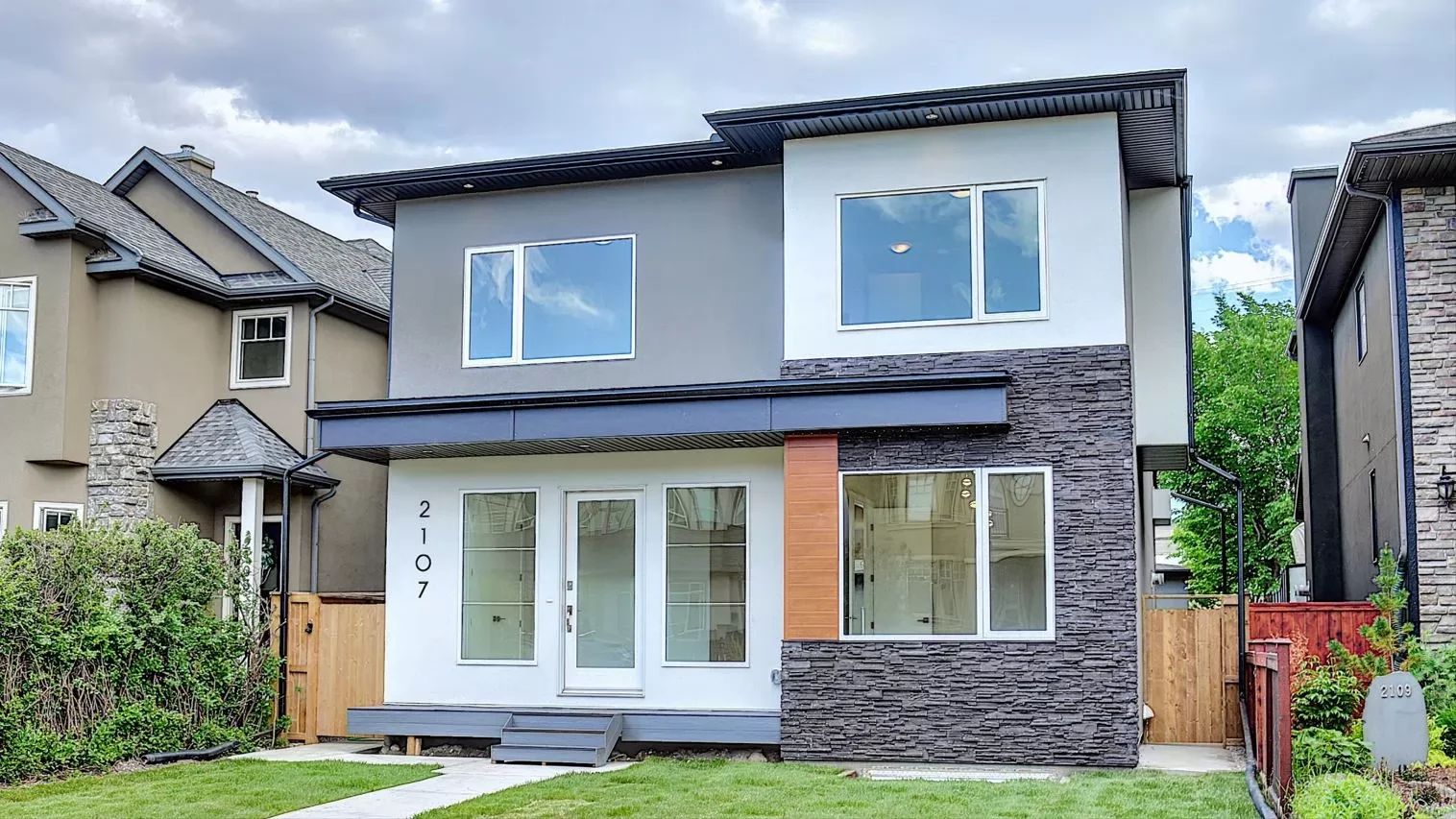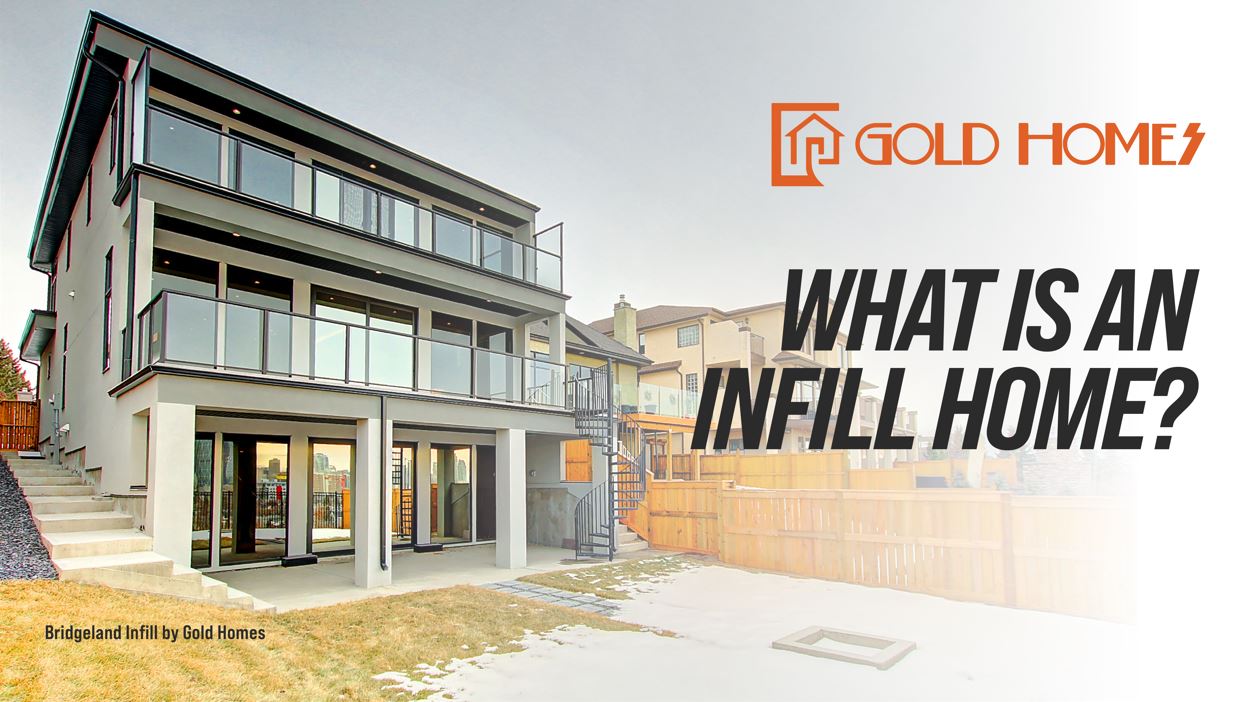People often ask, what is the difference between attached and detached infills? It’s a good question, and one to which we know the answer as an established custom inner city home builder in Calgary!
If you don’t know already, infill homes are new housing built into existing neighbourhoods or urban areas. In Calgary, the City Centre District is where you’ll find most infill projects, although some communities outside of this central region are also seeing new builds in recent years.
Infills come in two main varieties – attached and detached, and are generally defined as:
Attached Infill: a residential home built within an existing community and sharing at least one common wall with another similar dwelling. This type of housing is found in cities worldwide, often being more affordable and accessible than detached housing units.
Detached Infill: a residential home built within an existing neighbourhood that has no common wall(s) shared with another dwelling. This type of housing is found mainly in Calgary’s City Centre, and is often more spacious and luxurious than attached infill homes (and more pricey).
Pros and Cons of Attached & Detached Infills
View this post on Instagram
Why would you choose an attached infill over a detached infill and vice versa? Here are the pros and cons of each type:
Top 5 Benefits of Attached Infills
- Attached infills can have the same square footage as a detached property and is usually less expensive on a comparative basis, giving you more bang for your buck.
- Offers smaller living spaces versus detached ones, allowing for easier cleaning and maintenance.
- Provide a cozier vibe, allowing owners/tenants and their families to get that close-knit feeling without needing extra outdoor space.
- Great for empty nesters and investors looking to own both sides and rent out one unit as a means of earning secondary income
- Can save money on heating bills due to the thermal insulation benefits of having multiple sides of your home insulated at once.
Top 5 Downsides of Attached Infills
- A shared wall with your neighbour means you may have less privacy – you’ll likely often run into your neighbour as you come to and from your entrance
- Most attached infill homes have limited outdoor space, so if you’re looking for a large backyard or garden, this may not be the best option.
- Since you’ll be sharing walls with your neighbours, noise pollution can become an issue. This can be especially problematic if your neighbours are loud or have pets that bark frequently.
- Depending on the size of the infill, there may not be enough parking spaces for all residents, so you may need to park on the street or pay for additional parking spots.
- If something goes wrong with one side of the attached infill or the other, it could affect both homeowners.
Top 5 Benefits of Detached Infills
- With no shared walls, you won’t have to worry about noisy neighbours or their pets.
- Detached infills offer more design flexibility than their attached counterparts. As a result, you can customize your home to fit your exact needs and preferences without worrying about compromising on space or style due to shared walls with another property.
- Detached infills typically provide more lot and living space than attached ones, meaning you’ll have more room for outdoor activities like gardening or entertaining guests in your backyard.
- Because of their increased privacy and design flexibility, detached infills tend to have higher resale values than attached ones (they are also priced higher originally).
- Freedom to renovate as you please; a common shared wall may prevent you from performing certain renovations due to structural requirements.
Top 5 Downsides of Detached Infills
- Detached infills tend to be more expensive than their attached counterparts due to increased space and design flexibility. This can make them an inaccessible option for those with limited budgets or who want to keep the cost of monthly mortgage payments low.
- Most detached infills are built on larger lots than their attached counterparts, which can result in higher property taxes and additional fees for home maintenance.
- With more space comes higher utility costs as you have more space to heat and cool.
- More space means more cleaning; depending on your schedule, it may be tough to find hours in a day to maintain your home’s cleanliness
- Depending on your lot’s exterior landscaping, you may be required to spend time maintaining the exterior of your home throughout the year – leaving less time for other more important things in life
Attached vs. Detached Lots
View this post on Instagram
Another primary difference between attached and detached infill homes is the lots they are built on.
Attached infill homes are constructed side-by-side either in pairs of two or in three or more, the latter of which is more of a row house style. Detached infill homes do not share any physical connection with other dwellings – each building stands alone and does not have a shared wall with another residential unit.
Detached infills in Calgary are typically built on lots ranging from 25 to 60 feet in width and up to 120 feet in depth. Attached infills in Calgary are usually built on 50-foot wide by 120-foot deep lots.
Most inner city land parcels ripe for infill redevelopment have a minimum of 50-foot wide by up to 120-foot dimension, although lots are as unique as people and come in all different shapes and sizes.
If you’re looking for the perfect lot for a new infill build, we would be happy to help you find one!
Get the Best Infill Advice!
Overall, choosing between an attached vs detached infill home involves careful consideration of various factors including budget constraints, lifestyle needs, safety concerns and aesthetic preferences.
If you have questions about what kind of infill build is right for you or are looking for a lot to build on, don’t hesitate to reach out to us and we will be happy to help!



